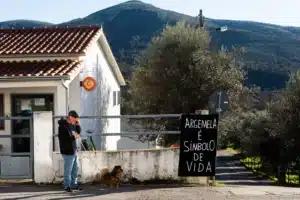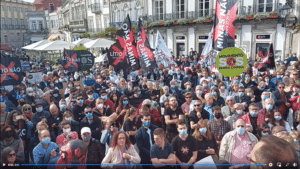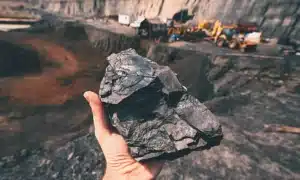Municipalities have begun mobilising against government plans to forge ahead with lithium prospection in six areas of the centre and north of the country (click here).
The first to advance with court action (a providência cautelar, which is a form of embargo) has been the municipal council of Pinhel (PSD) which has 40% of its area (215 sq kms) under threat by the policy.
In a statement over social media, the municipality stresses that the area destined for prospection includes “around 3,700 of vines, 2,300 hectares of olive groves, 140 hectares of almond grove and 370 hectares of other fruits”, according to the 2009 Agricultural Census. In the case of vines, this information is now out of date as there are “many more” now in place.
Pinhel’s mayor Rui Ventura has said he will be contacting other municipalities in the so-called Massueime concession in Guarda – Almeida, Figueira de Castelo Rodrigo, Trancoso and Mêda – with a view to all of them “developing efforts to stop this process”.
Environment minister João Pedro Matos Fernandes was on SIC television news this week explaining the inevitability of lithium mining in Portugal. It is “essential” for energetic transition, he told news anchor Judite de Sousa, and it could create “tens of thousands of jobs”.
But communities see the spectre of mining as detrimental to their ways of life, particularly in terms of damages to the environment and underground supplies of water.
There is also the understanding by scientists that Portugal really doesn’t have the supplies of lithium that justify destroying heritage landscapes (click here).
Pinhel’s position, already given during the public consultation process, is that “an area so vast in the borough” given over to prospection “would cause serious impacts on the economy, local society, tourism, the environment and landscape.
“Everything indicates that conditions to guarantee that the process moves forwards without causing damages to the borough and its residents were not, and are not, being taken into account”, said the municipality at the time.
Rui Ventura explains that in his opinion the government is being “irresponsible” in sanctioning such a large tract of the borough to be potentially opened up to mining.
Guarda is the district most affected by the government’s lithium strategy. There are four other concessions in Guarda: “GUARDA-MANGUALDE C” which includes the municipalities of Belmonte, Covilhã, Fundão and Guarda, “GUARDA-MANGUALDE E”, which covers Almeida, Belmonte, Guarda and Sabugal, “GUARDA-MANGUALDE W”, taking in Mangualde, Gouveia, Seia, Penalva do Castelo, Fornos de Algodres and Celorico da Beira, and “GUARDA-MANGUALDE NW”, including Viseu, Satão, Penalva do Castelo, Mangualde, Seia and Nelas.
The north has the “SEIXOSO-VIEIROS” concession, straddling the boroughs of Fafe, Celorico de Basto, Guimarães, Felgueiras, Amarante and Mondim de Basto.
In all, 1,495 sq kms are in the government’s sights for exploration – the equivalent of half the metropolitan area of Lisbon, or three quarters the metropolitan area of Porto.


























